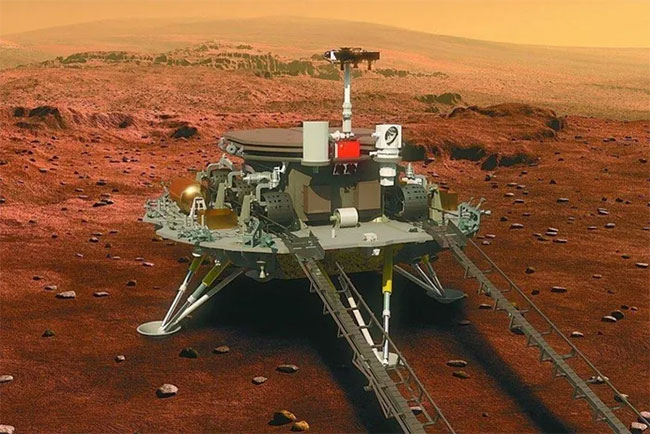On September 18, the China National Space Administration (CNSA) announced that China’s first Mars exploration mission using the Tianwen-1 spacecraft has achieved rich scientific results.

Illustration of the Tianwen-1 probe landing on the surface of Mars. (Photo: SCMP).
CNSA reported that as of September 15, the Tianwen-1 spacecraft has been operating in orbit for over 780 days, while the Zhurong rover has traveled 1,921 meters on the Martian surface, successfully completing its scientific exploration missions and collecting 1,480 gigabytes of data.
Based on the data collected, Chinese scientists have conducted a comprehensive study of the typical landforms in the exploration area, including concave cones, impact craters, and trenches, discovering a strong correlation between the formation of mountain ranges and water activity.
Through camera images and spectral data, researchers found water-containing minerals in the hard crustal rocks near the exploration area, demonstrating that significant liquid water activity has occurred in this region for the past 1 billion years.
Additionally, analyzing camera images of the tracks left by the rover and other information has helped researchers discover that the soil in the landing area has high load-bearing capacity and low friction parameters.
These new findings enhance researchers’ understanding of the impact of wind and water activity on geological evolution and environmental changes on Mars. According to CNSA, these discoveries further support the hypothesis that there was once an ocean on Utopia Planitia—the largest impact basin on Mars, which is believed to have contained a body of frozen water. It also enriches human scientific knowledge about the geological evolution and environmental changes on Mars.
Furthermore, the use of data from Tianwen-1 also helps researchers gain deeper insights into the relationship between rock density on the Martian surface and surface erosion levels, the distribution of ions and neutral particles in the near Martian space environment, and Mars’ gravitational field.


















































